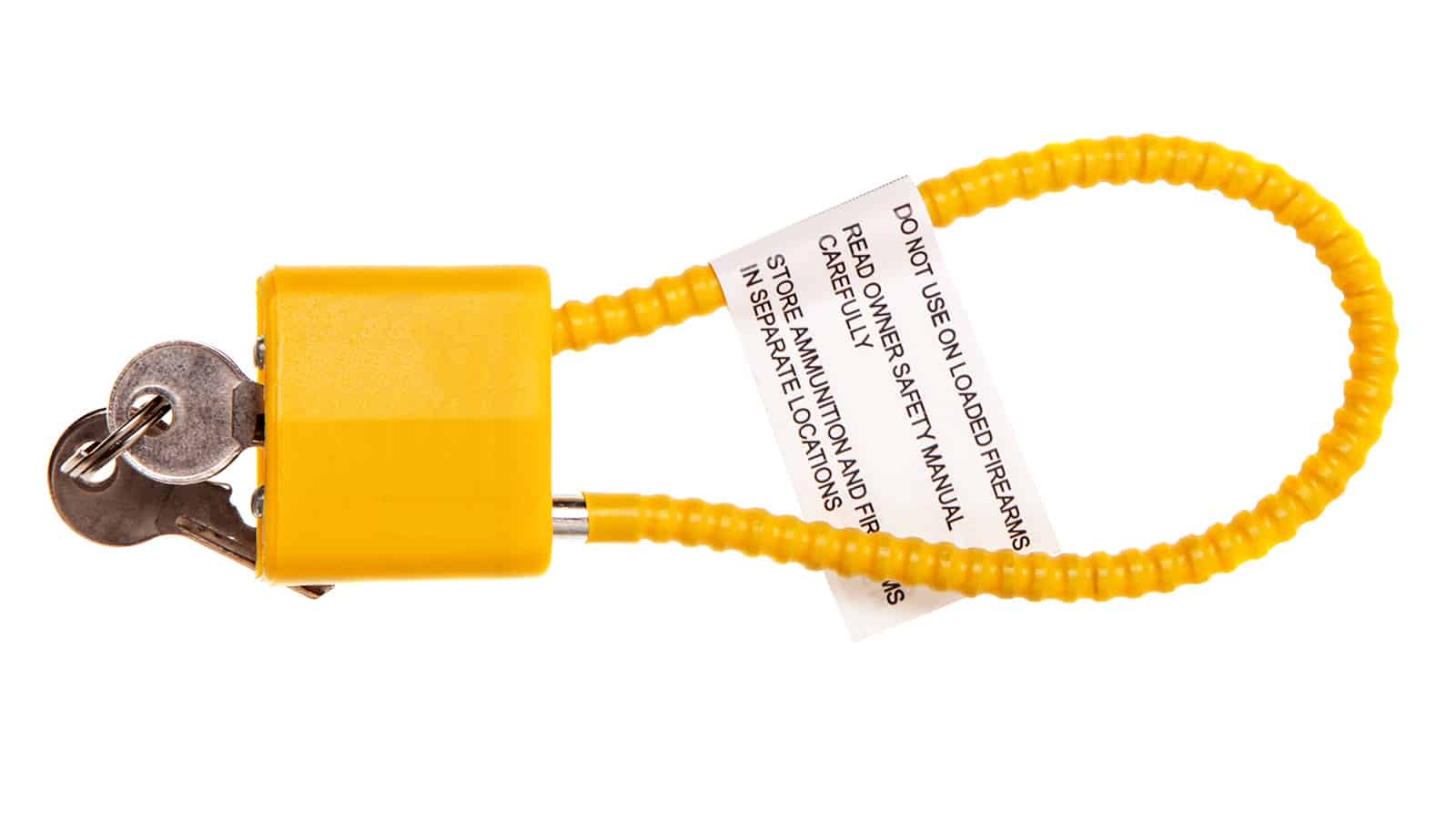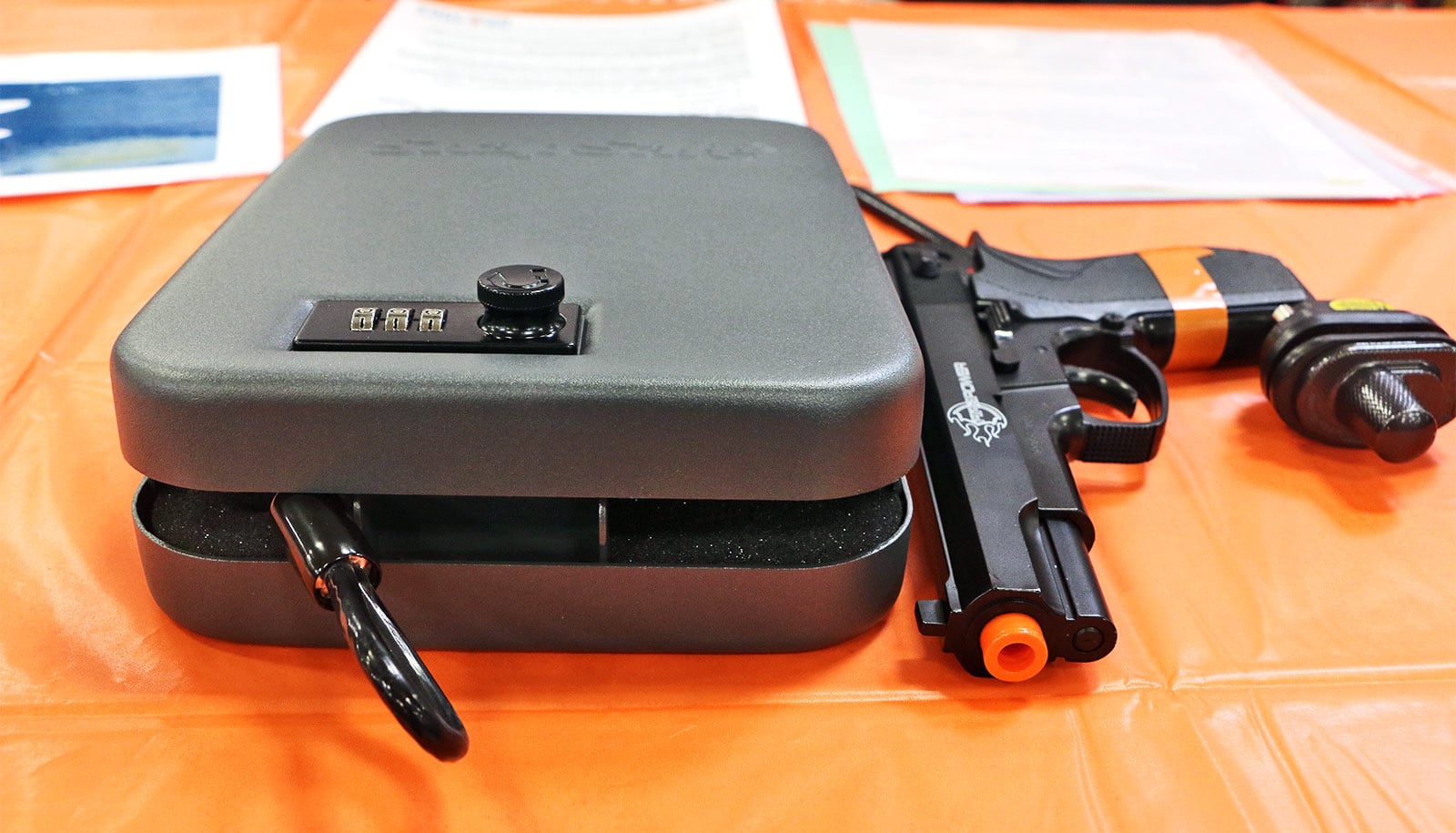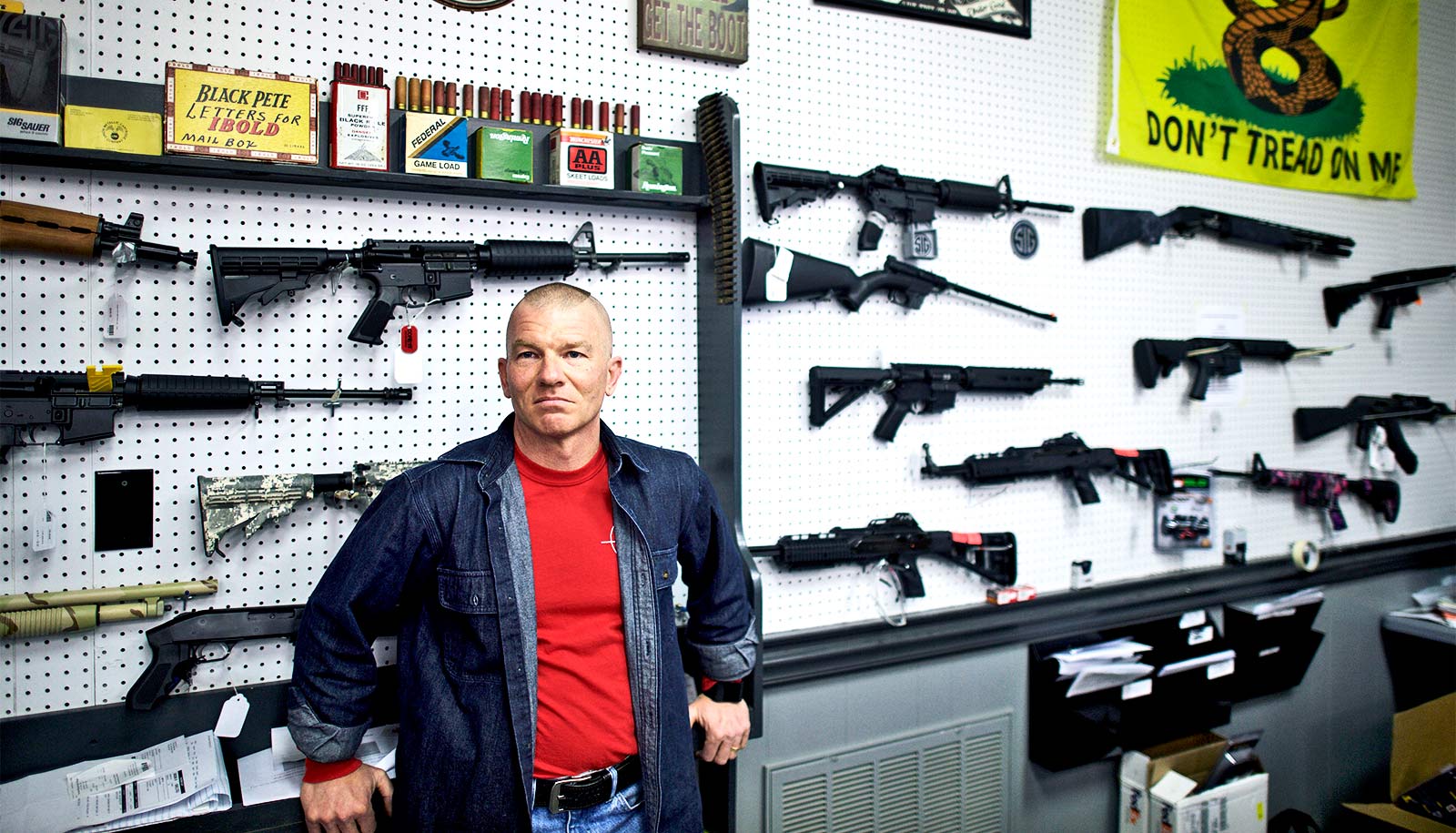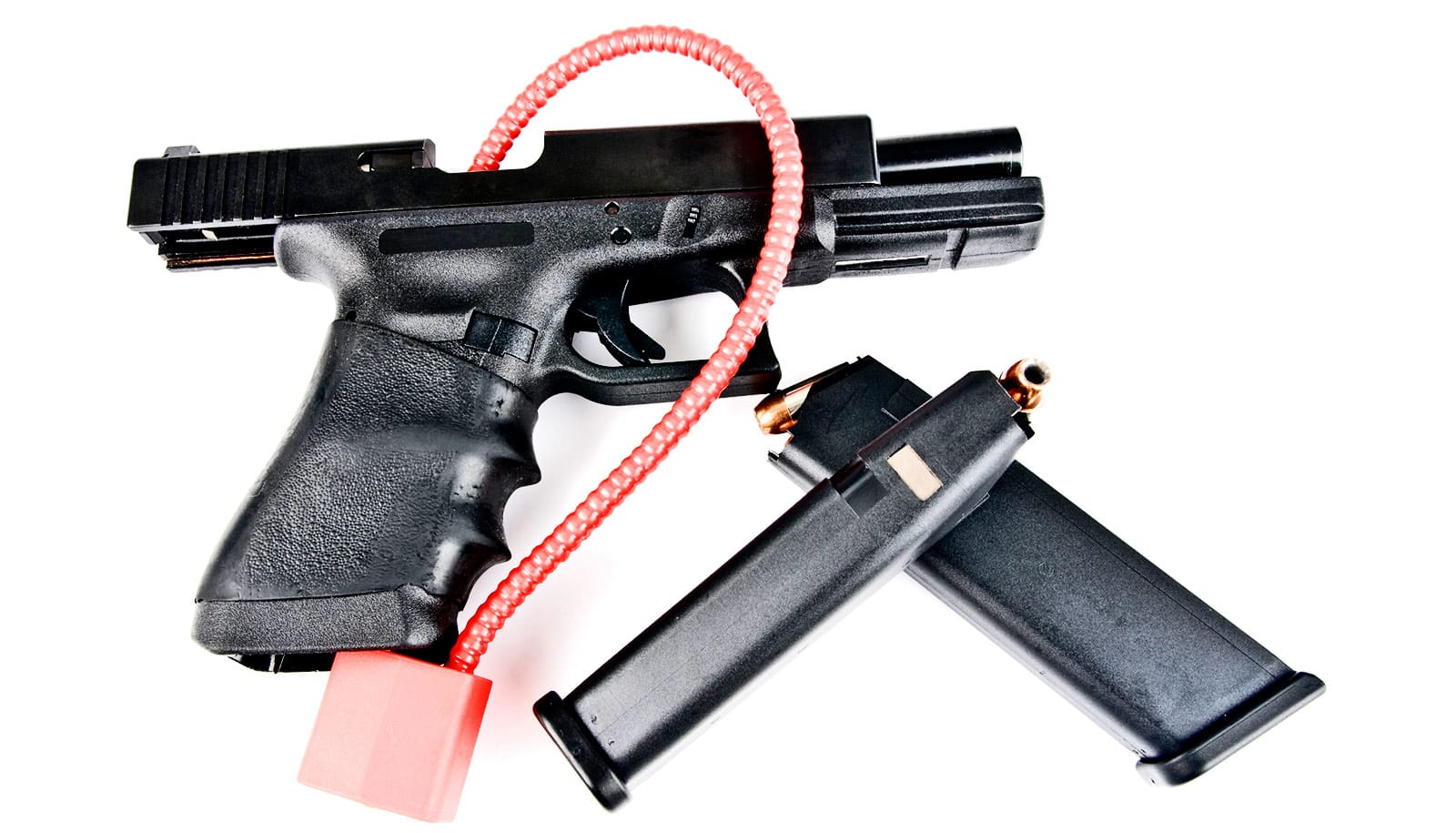People who learn about gun cable locks when buying a firearm are more than twice as likely to use locking devices, a new study shows.
Although cable locks—commonly distributed to prevent firearm injury and death—are included in many legal firearm purchases, firearm owners rarely prefer or use these devices.
“Simply placing a cable lock in a bag when somebody purchases a firearm likely has minimal impact, but a simple discussion mentioning that a lock was included may make enough of an impact to prompt the firearm owner to keep their firearms locked up when not in use,” says Michael Anestis, an associate professor in the Rutgers School of Public Health, executive director of the New Jersey Gun Violence Research Center at Rutgers University, and senior author of the study in the journal Injury Epidemiology.
“A simple conversation about how and why to use a lock may very well save a life.”
Anestis says the survey included 1,203 firearm-owning adults throughout the United States and 1,556 firearm-owning adults from Minnesota, Mississippi, and New Jersey. Nationally, researchers found that those told about the cable locks each time they made a purchase were more than four times likely to use a locking device on their firearms.
“These finding highlight an important role for firearm retailers in keeping firearm owners, their loved ones, and their communities safe,” Anestis says.
Although cable locks and similar devices can prevent all firearm injuries and deaths, research has shown that storing firearms unlocked and more readily accessible increases the risk of all forms of gun violence.
Lowering the odds that someone will access a firearm that they shouldn’t access offers substantial promise as a method to prevent tragedies—whether that means preventing a child from picking up a firearm and unintentionally shooting themselves or creating a barrier between a firearm owner and their weapon during a moment of crisis, the researchers say.
These findings indicate that firearm retailers are a pivotal component of effort to lower the risk of firearm injury and death, says lead author Shelby Bandel, a doctoral student at the New Jersey Gun Violence Research Center.
“Encouraging retailers to notify firearm buyers about the included locking devices may be a scalable tool for increasing secure firearm storage,” Bandel says. “A simple conversation about how and why to use a lock may very well save a life.”
Source: Rutgers University



